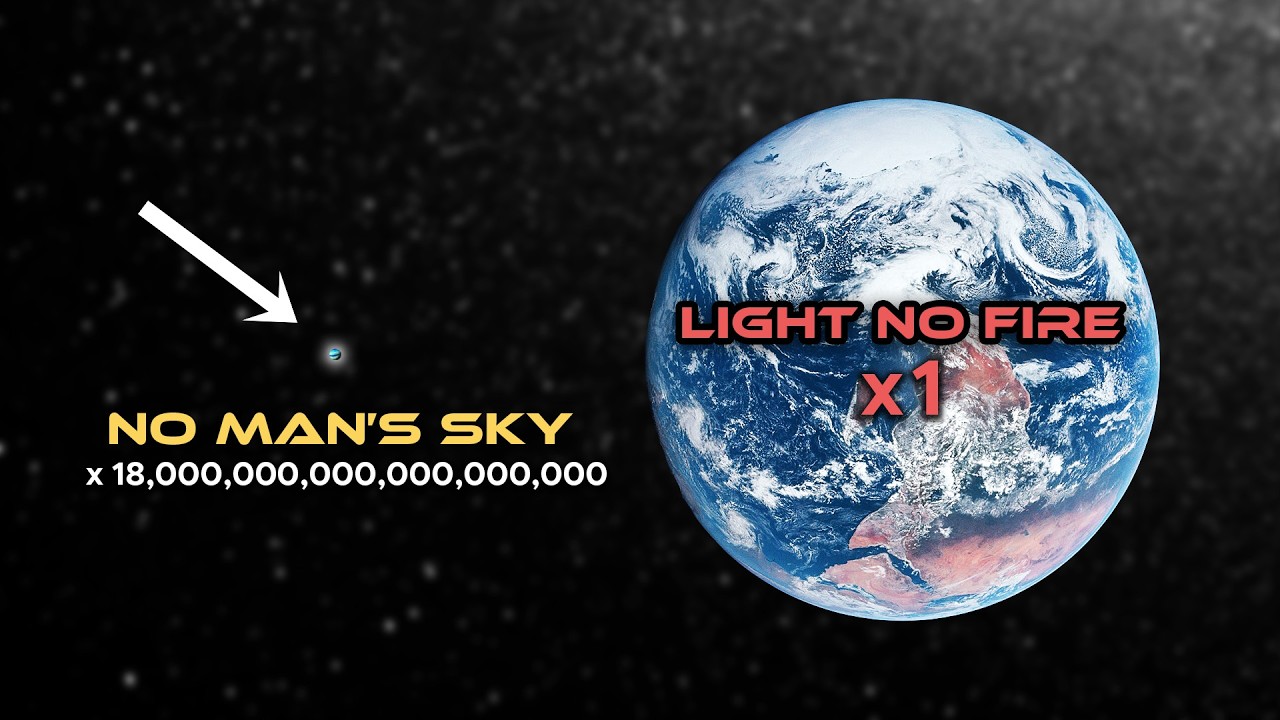The video compares the scale of Light No Fire’s single Earth-sized planet to the vast but much smaller planets in No Man’s Sky, emphasizing that while No Man’s Sky offers billions of smaller planets, Light No Fire provides a realistically scaled, expansive Earth-like world. It concludes that despite the difference in scale, Light No Fire will offer a rich and meaningful exploration experience with plenty of undiscovered areas for players.
In this video, Robot Boy explores the scale differences between planets in the game No Man’s Sky and the single Earth-sized planet featured in Light No Fire. The discussion is sparked by comments comparing the exploration time and size of Light No Fire’s planet to the vast number of planets in No Man’s Sky. The key point is that Light No Fire’s planet is said to be Earth-sized, meaning it is roughly on a one-to-one scale with our real Earth, while No Man’s Sky features an estimated 18 quintillion procedurally generated planets of varying sizes.
The video breaks down the sizes by first looking at smaller celestial bodies in No Man’s Sky, such as moons that can be as small as 12 km in diameter, which would take about 7.6 hours to walk around at a normal pace. Larger planets in No Man’s Sky can reach up to 130 km in diameter, taking approximately 81.6 hours to circumnavigate on foot. These sizes, while large for a video game, are still minuscule compared to real-world celestial bodies like Earth and the Moon.
In contrast, Earth has a diameter of about 12,742 km and a circumference of roughly 40,075 km, which would take an estimated 334 days to walk around non-stop at an average speed of 5 km/h. The Moon’s circumference is about 10,921 km, which would take around 90 days to walk around. The video points out that these real-world scales are much larger by orders of magnitude than anything found in No Man’s Sky, highlighting how the game’s planets are scaled down for gameplay reasons.
Robot Boy then addresses concerns that Light No Fire’s single Earth-sized planet might be explored too quickly compared to the nearly infinite planets in No Man’s Sky. He argues that even in reality, humans have not fully explored every inch of Earth, with vast areas like the Amazon rainforest and the oceans still largely uncharted. Additionally, the number of players in Light No Fire will be a tiny fraction of the global population, meaning the chance of overlapping exploration is low, and there will still be plenty of space and content for players to discover.
In summary, the video concludes that while Light No Fire’s planet is much smaller in scale compared to No Man’s Sky’s universe, it will still offer a vast and rich environment for exploration. The individual player experience will always present new areas to discover, and the game’s scale is appropriate for meaningful gameplay. Robot Boy invites viewers to share their thoughts on the scale comparison and encourages them to like, subscribe, and consider joining the channel for exclusive content.
